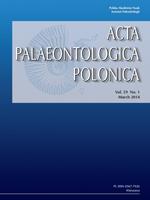There can be no doubt that this century has witnessed a significant revolution in terms of how we visualize, study and digitally dissect fossil specimens. However, as noted by the authors, it is not all entirely new (palaeontological tomography dates back to the early 1900s). This book provides the background to, and techniques available for, working with 3D fossils in the 21st century, not so much in a way that we never knew we could, but more in a way that we always thought we should but did not know how to. Previously, many palaeontologists (myself included) have relied on the technical skills of those (non-palaeontologists) who know how to operate the equipment. However, the authors rightly contend that the importance of virtual palaeontology is now such that palaeobiologists should have a better understanding of the techniques, and that this should also be one of the core skills that we impart to palaeontologists of the future. Such knowledge will make selecting the most appropriate technique easier and should also mean that methods sections in published papers include the correct information (e.g. vital scanning parameters), which are often lacking, but necessary for other researchers who may wish to replicate the studies or take them further. Hence, in addition to being a book for established palaeontologists wishing to seek information on the techniques available, it also has potential as recommended (supplemental) reading for undergraduate students.
The authors have 25 years experience between them. Their relevant expertise is evident from the broad content, which they have managed to present in depth, but also in a manner that is surprisingly easy to understand. There are seven chapters as follows: Introduction and History; Destructive Tomography; Non-Destructive Tomography; Surface-Based Methods; Digital Visualization; Applications beyond Visualization; Summary. Techniques covered include: Physical-Optical Tomography; Focused Ion Beam Tomography; X-Ray Computed Tomography (including Nano-CT and Synchrotron Tomography); Neutron Tomography; Magnetic Resonance Imaging; Optical Tomography (Serial Focusing); Laser Scanning; Photogrammetry; Mechanical Digitization; Reconstructing Tomographic Data; Reconstructing Surface Data; Visualization Methodologies; Software and Formats: and in brief, applications with regard to: Geometric Morphometrics; Dental Microware Texture Analysis; Biomechanical Modelling using Finite Element Analysis and Computational Fluid Dynamics. Principles and practicalities are discussed and relevant palaeontological case studies are presented. The summary flowchart on page 183 provides a “rule-of-thumb” method for selecting the most appropriate technique based on various requirements, such as size, X-Ray amenability and translucency of the fossil to be studied. Each chapter has its own references and the books ends with a 7-page glossary and a 6-page index.
The authors discuss the pros and cons of the various techniques and also note where they can be detrimental to future studies. For example, they note that although CT scanning is non-destructive, it does employ ionizing radiation, which will prohibit subsequent dating studies using Electron Spin Resonance, as this relies on radiation exposure to estimate the age of the sample. They also discuss the potential of techniques not yet employed in a palaeontological context, such as K-Edge Subtraction, XANES Tomography, and Colour CT.
In terms of production, the book is well presented. I spotted only a handful of minor typos and inconsistencies. My only complaint is that some of the figures would have benefited from being slightly larger. In conclusion, this timely and valuable work fills a gap in the “techniques” literature and deserves a place on the shelves of palaeontological laboratories and university libraries worldwide.





